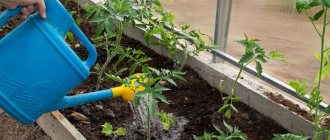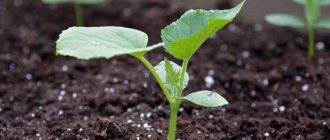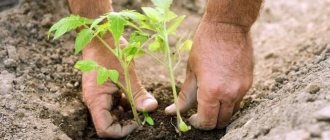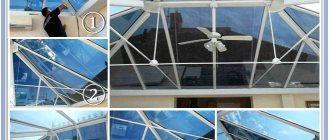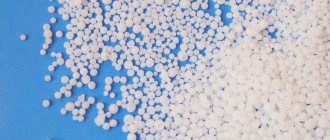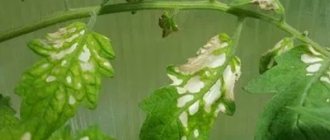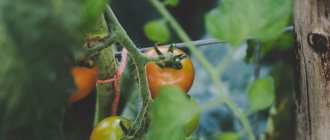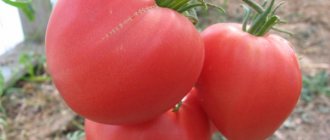Boric acid for tomato ovary is used during plant flowering and fruit filling. This cheap and easy-to-use product is sold at any gardening store or pharmacy.
With the help of boron, you can “kill” three birds with one stone: increase the number of flowers (and therefore ovaries), fertilize plants, protect them from diseases and pests. The drug is sold in the form of a colorless and odorless powder and belongs to hazard class 4 (low-hazard substances). Using it on the site, the gardener does not risk anything.
Boric acid for tomatoes
It has been scientifically proven that boric acid is as necessary for tomatoes as nitrogen or phosphorus. Often, vegetable growers, having grown excellent seedlings, are faced with falling buds, weak ovary growth, and all this is due to boron deficiency. The tomato also owes its taste and sweetness to the element boron.
To get an excellent tomato harvest you need to clearly know:
- when to feed;
- how exactly to carry out the treatment;
- what method to choose at a certain stage of the tomato growing season;
- how to prepare boron solution;
- how long to store the prepared drug.
Pure boric acid appears as odorless white crystals. You can buy this chemical at:
- medical or veterinary pharmacy;
- garden specialty store;
- hardware store.
Researchers have found that boron increases the viscosity of the cell cytoplasm and the water content in it. And this affects transpiration and turgor. Thus, the element helps the tomato survive drought and not lose its presentation during long-term storage.
What is boric acid
Boron is absorbed by plant cells only in the form of boric acid anion.
This connection:
- has weak acidic properties;
- dissolves well in hot water;
- has no smell;
- can be stored well in solutions;
- does not give sediment;
- low toxic for warm-blooded animals
Boric acid is used in medicine, agriculture, technology, and the food industry (not in all countries).
All properties of the element continue to be studied. However, it has long been proven that boron is very important for tomatoes.
How is boron beneficial for tomatoes?
Boric acid for tomatoes is necessary for the formation of complex compounds of sugar borates. The boron itself is inactive. Once in a certain place, it remains there practically unchanged. Cellular juices cannot “advance” the element to where it is needed, namely to young, growing cells, buds, and ovaries.
Carbohydrates, reacting with this element, have the property of being quickly absorbed by the cell wall and moving throughout the plant to the desired, rapidly growing parts of the tomato bush.
Attention! If we consider phosphorus, it moves through the vascular system from cell to cell. Bohr is motionless - where he “sits down” is good. It should be supplied to the tomato bush as it grows. Only a vegetable grower can help.
In the presence of the boron element, young cells actively grow and divide. But then comes the shortage. Growth slows down and division stops. Rapid aging and cell death occurs. What kind of tomato ovary can we talk about under such conditions? Of course, the tomato buds turn yellow and fall off. The resulting ovary slows down and then stops growth altogether. This deficiency is very clearly visible in grapes; there is massive “pea-spotting”. Those tomatoes that have already entered the stage of botanical ripeness also feel deficient. They lose theirs:
- elasticity;
- marketability;
- the taste stated in the description of the variety.
Heat, heat, dry winds, even short-term ones, do not have the best effect on tomatoes. Boron will help the plant overcome this period. Getting into the cell membrane, it makes it elastic, dense and does not allow the moisture that is already lacking to evaporate. The plant does not lose turgor, saves water and can wait out a long, dry period.
Vegetable growers observe how, in extreme heat, the buds fall off without opening. Or they open, but the flowers also fall off without waiting for pollination. To grow the next flower brush you need:
- time;
- nutrients;
- water;
- optimal temperature conditions.
Nature is not always favorable to the vegetable grower and gardener. Under unfavorable conditions, tomato bushes lose up to 40% of their yield. It's a lot. Boron can significantly reduce losses.
Signs of Deficiency
It is not always possible to determine exactly what a tomato plant lacks without laboratory tests.
It has been experimentally proven that boron starvation on tomatoes will manifest itself in the form of:
- withering and death of apical buds, growth points of the root and stem;
- chlorosis (yellowing) of young leaves;
- the leaves become thinner to the touch and smaller in size. The color of old leaves becomes more saturated, dark green. The contrast of young and old foliage is clearly visible;
- not opening the buds;
- yellowing and falling of buds;
- weak flowering;
- falling flowers;
- weak ovary growth;
- deformities of the ovaries and subsequently the entire fetus;
- crushing (peating) of tomato fruits.
Note! Experienced vegetable growers determine the boron content of soils by looking at other vegetables that are more sensitive to the element.
- beets respond to starvation by rotting the central part of the root crop (core rot);
- rutabaga often changes color to brown;
- turnips and cabbage are not marketable;
- The apical leaves of potatoes become lighter. In this case, the enlightenment that clearly appears at the base of the leaf is significant. The internodes are shortened and the tubers become smaller;
- The tops of flax dry out.
But cereal crops (wheat, rye) do not respond at all to boron deficiency.
The upper part of the stem dies or becomes bent; the internodes are shortened, making the bush seem
Signs of excess
Excessive boron content in the plant body can only be observed when large doses of boron fertilizers are incorrectly applied.
It was experimentally established that toxic doses of boron cause in a tomato bush:
- marginal necrosis of leaves, starting from the lower tiers;
- yellowing and wilting of leaf blades;
- dome-shaped leaves;
- a sharp decrease in yield.
If boron fertilizers are not used, then there cannot be an excess amount of it in tomatoes.
What effect can you expect after use?
Treating tomatoes with boric acid is an effective method for increasing yield. A special effect is visible when there is abnormal heat and tomato bushes shed buds after buds. It’s a pity to look at the first cysts when all that remains of them are small stalks that will never be stalks.
After treatment with the solution, the effect can be observed immediately. Treated buds do not fall off. They hold tight and bloom in bouquets of flowers. The emerging ovary is also well attached and quickly begins to grow.
After regular treatments, the increase in yield will be significantly noticeable. The taste of the fruit will improve, and transportability and shelf life will increase significantly.
What soils are boron deficient in?
While examining the soils, experts came up with the following figures:
The richest soils in the forest are gray soils and saline soils. They contain from 20 to 120 mg/kg.
Further like this:
- dark-colored swampy and soddy-podzolic soils of light granulometric composition contain 1-2 mg/kg;
- in soddy-podzolic soils, boron is 0.02-0.6 mg/kg,
- in forest-steppe - 0.3-0.9 mg/kg,
- chernozems - 0.5-1.8 and saline soils - 1.0-10 mg/kg of soil;
Average figures for arable soils in Russia are 5 kg of boron per hectare of area. And per 1 kg of soil there are 1-120 mg of the element.
Attention! It should be understood that all numbers are very relative. Only laboratory analysis of specific soils can give an accurate picture.
Even knowing the exact figure, it is not of great interest. The main thing is not how much of the element is retained in the soil, but how much it is absorbed by the plant, water-soluble.
The availability of boron for the plant greatly reduces liming. The fact is that the presence of lime significantly increases the stability of boron compounds and digestibility becomes much less.
Those vegetable growers whose tomatoes grow on sandy soils should also carefully consider boron fertilizing, since sands are very poor in the element.
What does boron contain?
The tomato plant does not need much boron. And small shares of it are contained in soils and fertilizers. Let's look at the table:
| Name of fertilizer type | Boron content in mg/kg |
| Animal manure with straw bedding | 20,1 |
| Lowland peat | 32,2-36,6 |
| High peat | 6,1-7,3 |
| Transitional peat | 5,8-9,5 |
| Lime | 2,7 |
| Crystalline magnesite | 4,5 |
| Wood ash: spruce | 202,8-205 |
| aspen | 476-480 |
| birch | 333,4-451,5 |
| Dolomite | 3,8-8,1 |
For gardeners, manure and lowland peat are valuable as a source of this element for ground nutrition, but for foliar feeding, stove ash obtained from deciduous trees.
Attention! The point is not how much boron, but whether it is available for absorption by the cells of the tomato plant.
The prepared solution, getting on the buds and flowers, is immediately absorbed by the tissues. Boron found in ash, peat, and manure must undergo certain chemical transformations and only then will it be available to plant cells. This takes time. To determine the period, you should conduct complex chemical and laboratory studies, or act at random.
The role of boron in plant life
Boron is a necessary trace element for the life of all plants. It is needed in small (compared to basic batteries) quantities. But its biological role is great.
Boron is an active participant in the development of the meristem (educational tissue). The trace element stimulates cell division in vigorously growing parts of the plant. These are growing points, root tips, young leaves, parts of reproductive organs and vascular tissue cells.
Boron improves the production of carbohydrates, especially sucrose, in plant leaves. Accelerates their distribution to the roots and fruiting organs. Stimulates pollen germination and prevents ovaries from falling off.
Boron promotes better absorption and use of calcium in plant metabolic processes. The trace element normalizes the production of nitrogenous substances and increases the level of chlorophyll in the leaves.
Lack of boron causes plant depression. They are often affected by diseases and pests.
Boron starvation does not lead to the death of plants, but significantly reduces the speed and coherence of their development processes. Ultimately, the crops produce low and poor-quality yields.
Methods and scheme for fertilizing tomatoes with boric acid
Excess is as harmful as deficiency. Sometimes vegetable growers feed tomatoes with this solution thoughtlessly, without clear knowledge and understanding of the need for the process.
Soaking the seeds
Think about it. In production, 10 g per 100 kg of seeds are used for soaking seeds. I dissolve the dose in a liter of water, and treat a hundredweight of seeds by spraying from a spray bottle. Vegetable growers, in pursuit of productivity, often use this dose for 10 seeds. There is no need to do this.
To soak tomato seeds at home, it is better to use a solution of stove ash. It is poured into a glass of hot water at a dose of ½ teaspoon per 200 ml of liquid and after cooling, tomato seeds are dipped in there for 15-20 minutes. If you decide to use boric acid, then add very, very little of it per 100 g of water.
Soil pre-treatment
The soils contain enough boron for a successful start. Since a tiny amount of the element is needed, no matter what soil mixture the vegetable grower uses in relation to boron, it will be suitable.
Root feeding
Tomato does not need root feeding with boron fertilizers. During the period of initial growth, it is better to give preference to nitrogen, and then switch to phosphorus-potassium.
Spraying tomatoes with boric acid concentrate
Crystalline boric acid is dissolved in hot (80-90 ᵒC) water. Make the solution in two stages:
- Add 10 g of boric acid to a liter of hot water and stir. Cool.
- Next, take 9 liters of cold water and add 1 liter of prepared, cooled mother solution to it.
Attention! To prepare a working solution suitable for treating tomato bushes, you need 10 g of boric acid and 10 liters of water. The concentration will correspond to 0.1%.
There's no need to rush. The solution has the following properties:
- does not lose concentration (boron does not evaporate);
- Stores well for several weeks in a cool place, out of reach of children;
- has weak acid properties;
- does not irritate the skin;
- non-toxic for humans, animals and insects (toxicity group 4);
What do we have to do
We periodically inspect tomato bushes. As soon as we begin to notice the first buds, we can carry out the first spraying of tomatoes with a solution of boric acid.
The treatment is carried out on the tops, young shoots and buds until the leaf plates are completely wetted. This is how we process the first brushes.
This will be followed by a second treatment. A careful examination and determination of the moment of formation of the second brush will indicate the time for re-processing.
Those shoots and brushes that have already been processed do not need the element. It's there, we don't spray them. To re-feed, there is no longer any need to use a large spray bottle, since much less solution will be needed.
If a vegetable grower has doubts about the need for such treatments, you can leave several bushes without treatment and compare the yield and taste. Experienced gardeners have long noticed that bushes sprayed in a timely manner produce marketable fruit:
- tastier;
- sweeter
- heavier;
- 20-25% more than control;
- with excellent keeping quality and transportability.
If the deadlines are missed and the examination shows shedding of the ovary, there is nothing to worry about. In this case, the harvest of the first cluster will be lost. You should quickly prepare the solution and spray the plants.
Attention! Treatments are especially appropriate where the weather breaks temperature records.
What not to do
It is not recommended to carry out boron or any other mineral fertilizing if:
- tomato bushes are weakened;
- affected by late blight or other diseases;
- depleted by prolonged precipitation or very high temperatures without irrigation;
- the bushes are planted on poor soils without fertilizing or watering.
By stimulating the formation of ovaries and fruit growth, the vegetable grower must take care of the nutritional content of the soil. If there are no nutrients and the plant is weakened, it will not be able to produce a high yield and “nourish” everything that has started. Before fertilizing with microelements, it is necessary to improve watering and carry out organic fertilizing.
Can this same recipe be used for cucumbers?
Cucumbers respond well to spraying with boric acid.
Boron has a positive effect on the formation of ovaries not only of tomatoes, but also of cucumbers. The root system of the latter lies shallow, so it is more difficult for cucumbers to bind and absorb the required amount of boron.
The need for microelements increases sharply during dry periods: cucumber leaves become denser and curled, growth slows down, and ovaries are almost absent. If boron starvation is significant, then the flowers begin to crumble and the stems acquire an orange tint. Diseases such as dry and brown rot and bacteriosis may develop. Spraying and root feeding with boric acid will help save diseased plants.
To spray the bushes, dissolve 1/2 teaspoon of boric acid in 10 liters of water. After this treatment, cucumbers form ovaries abundantly, which has a great effect on yield. When spraying, it is worth considering the soil composition in the greenhouse. Chernozem requires less boron than acidic soil.
Boric acid for tomato ovaries is a simple and effective way to increase productivity without extra material costs. However, a reasonable approach is required from the gardener. Only proper treatment with boron will benefit and not harm the plants.
How often and when should you feed with boric acid?
As a rule, 3-4 treatments are carried out per season. The first is the main one, abundant and subsequent corrective ones.
Feeding can be done at intervals of 12-15 days. More clear and correct recommendations can be given only by analyzing the climatic and weather conditions of growth.
After disembarkation
Immediately after planting, tomatoes do not need to be fertilized with boron fertilizers. Several weeks after stress should pass without feeding. This will give you the opportunity to get used to new conditions, adapt and grow.
During flowering
After the appearance of the first brush, flowering begins, and the second brush begins to grow. It is recommended to do the treatment on the bud, but not on the flower.
In fact, there will be both buds and flowers on one plant. With timely processing, the flowers will already be processed, being buds, and the next processing is carried out on the next tomato brushes with buds.
Signs of Boron Deficiency
You can determine that a tomato is suffering from boron starvation by the following signs:
- Yellowing of young leaves (chlorosis).
- The growing points of the stem and root, as well as the apical buds, wither or die.
- The leaves become thinner and smaller in size. At the same time, old leaves acquire a more saturated green color. The shade of old and young leaves contrasts.
- Buds and flowers turn yellow and fall off and do not open.
- The ovaries, and subsequently the fruit itself, can be disfigured.
- Tomato fruits become smaller, and the pea process is observed.
Boric acid against pests and diseases
When preparing an acid solution of 0.1% concentration, it should be understood that it does not have bactericidal, bacteriostatic or antifungal properties. It is too weak to kill the pathogen or pest. For this purpose, products with a concentration of at least 2% are needed.
Against garden ants
Spraying an anthill with solutions will not lead to the desired result. Need sweet bait. To do this we do this:
- put 1 tbsp in a bowl. spoon of flour. Add 10 g of boric acid and 1 tbsp. a spoonful of sugar;
- add enough water to form balls;
- Use a spoon to form floury sweet balls;
- We place them in places where there are a lot of insects.
Attention! The product does not kill the insect. It regulates numbers through “sterilization.”
Such sweet balls can be placed in those places where the work of the mole cricket is visible. By taking them into the burrows with her, she will deprive herself of the opportunity to have offspring.
Against late blight
To combat the fungus that causes late blight, boric acid solutions are powerless. It may seem that the treated bushes were less affected than the untreated ones, but this is only an appearance.
There are excellent, effective drugs for the prevention and control of late blight. Using Quadris, Bordeaux mixture, and Revus, you can prevent fungus from growing in tomato beds.
How long does the diluted solution last?
When choosing one or another recipe for preparing the product for feeding tomatoes, the shelf life of the resulting liquids will differ.
An ordinary aqueous solution of the drug can be stored with virtually no restrictions. The only condition is that the container must be closed, since as the water weathers, the concentration of the microelement in the liquid will increase. This is fraught with chemical burns to the tomatoes.
Solutions based on dairy products are best used within 24 hours and not stored for a long time.
Features of processing tomatoes with boric acid
Is there a difference in how to treat tomatoes with boric acid in open ground and in a greenhouse? Of course have. A greenhouse is a protected soil and it is possible to create a controlled microclimate in it.
Greenhouse processing methods
To cultivate tomato plantings in a greenhouse, there is no need to choose calm weather or lack of rain. Nothing interferes with processing. As soon as the first ovary appears, processing can begin.
Methods of processing in open ground
To treat bushes in open ground, you should pay attention to the weather. She must be:
- windless;
- not rainy;
- not creating a dew point on the bushes.
For the first treatment, you can use a large sprayer. Especially if there are a lot of tomatoes and they are tall.
For the second and subsequent treatments, use a small sprayer and spray only on the buds and growing tip.
What problems might there be?
Failure to comply with the proportions or spraying tomatoes with boric acid for ovary in the heat can lead to burns of the leaves.
Watering and spraying with boric acid for ovary of tomatoes in a greenhouse and open ground is carried out in compliance with the recommendations for preparing the solution. Unjustified excess of concentration, increasing the number of treatments, spraying in the scorching rays of the sun can lead to leaf burns, toxicosis, and marginal necrosis; leaf blades turn yellow, dry out and die.
If the soil contains a lot of lime, then the applied boron will be used to maintain the vital activity of soil microorganisms, and the tomato bushes will get practically nothing.
A bountiful tomato harvest can be obtained only with comprehensive care of the plantings throughout the season. This complex also includes treating tomatoes with boric acid for the ovary.
Precautions during operation
The body of warm-blooded animals (humans, animals) does not need boron. Once an element gets into the tissue, it is removed from it very slowly. Therefore, when preparing and using solutions, you should strictly adhere to the rules of personal hygiene and occupational safety equipment. Using protective equipment (gloves, suits, gowns) you can protect serous and mucous membranes from contact with solutions.
While working, you must not eat, smoke or drink water.
After work, you should wash your entire body with soap, especially exposed areas.
Precautions during processing
- When working with boric acid, you must have a special apron, rubber gloves, goggles and a respirator.
- It is recommended to prepare solutions outdoors, away from children and pets.
- Treatment of plants should be carried out in dry, windless weather, in the morning or evening.
- For spraying, it is better to use a fine spray nozzle so that drops do not collect on the leaves. The reverse side of the leaves also needs to be carefully processed.
Important! Vapors from the solution must not be inhaled. This can cause burns to the mucous membrane, skin irritation and poisoning.
Common mistakes
When using boric acid solutions for tomatoes, gardeners make a number of mistakes:
- Using it for tomato ovaries requires a clear proportion and concentration not higher than 0.1%.
- When preparing the solution, you need very hot water (80-90 ᵒC). In colder water, the crystals will not completely dissolve and the concentration will be lower.
- When preparing a solution, you cannot determine the weight of the dry substance by eye; you should use a scale.
- The solution is non-toxic and rapid poisoning will not occur. This provokes people not to use protective equipment. It’s better not to do this - the substance is poorly excreted from the body.
Symptoms of excess
But it is necessary to apply preparations containing boron strictly according to the instructions for use. Although an overabundance of this element occurs very rarely, it does happen. The main symptoms of an overdose of this element:
- the leaves become glossy, as if there is an excess of nitrogen;
- Brown or brown spots appear on old leaves, they quickly increase in size and the leaf dies;
- tomato bushes begin to wither;
- the middle of the leaf blade bends upward and the foliage takes on the shape of a dome;
Other feeding products
Along with boric acid solution, you can use other products containing boron:
- boron-magnesium fertilizer. The percentage of boron is 2.3, magnesium oxide is 15%. Produced from waste during the synthesis of boric acid. Not hygroscopic. Used for root and non-root feeding;
- borosuperphosphate. Contains boron -0.2% and phosphorus - 18-19%. Does not cake and does not attract moisture. Used before sowing;
- double boron superphosphate. Boron level - 0.4%, phosphorus - 40-42%. Analogue of simple boron superphosphate;
- borax. Boron content - 11%. Doesn't cake. Dissolves well in warm water. Used for foliar feeding.
The industry produces sufficient quantities of multicomponent fertilizers, which include boron: Mikrovit, Novalon, Braktiv, Microkat boron and many others. The market is full. It is enough to contact a gardening store and experts will tell you which preparation is most suitable for boron fertilizing.
No matter how knowledgeable the gardener is about the instructions for use and preparation of the solution, there are instructions for the specific preparation. You can't rely on your experience. Different manufacturers add only their own additives and innovations to fertilizers. To avoid overdose, you must follow the instructions.
Fertilizer Application Methods
Fertilizers containing boron can be applied in two ways: by applying “at the root” or by fertilizing “by the leaf”.
Root method
When applying boron-containing fertilizers “at the root”, you can use both liquid and granular fertilizers.
Granular preparations are usually applied to the beds in the spring before planting vegetables. Such fertilizer will decompose more slowly, so mineral elements will flow to the roots of vegetables in portions.
Liquid fertilizers applied to the soil will be more quickly absorbed by tomato roots, so the nutrients will reach their destination faster.
Foliar method
Sometimes urgent application of boron-containing fertilizers to plants is required.
In this case, foliar feeding or spraying is carried out. The dosage of such spraying is two times less than when applied to the soil.
In this case, the nutrients immediately enter the leaf cells and disperse with the juice throughout the plant. You can treat the plants using a garden sprayer.
Read about the signs of deficiency of other microelements in tomatoes: phosphorus, nitrogen, calcium, sulfur and iron in the materials at the links.
Typically, foliar and root feeding alternate with each other.
Tips and recommendations from experienced summer residents
Experienced gardeners have long noticed the effect of fertilizing tomatoes with boric acid.
The abnormal temperatures and records that nature gives us force gardeners to pay close attention to their crops. To avoid crop loss and ovary shedding, gardeners use boric acid even more intensively than they should.
Many summer residents sell surplus tomatoes on the market, and in this regard, this acid is also a helper. Processed tomatoes have:
- best presentation;
- high keeping quality;
- excellent transportability.
Preparing the solution and treating the bushes is not at all difficult. Experienced summer residents recommend spraying regularly and see the results for yourself.
How to determine boron deficiency in tomatoes and cucumbers
Boron deficiency can be determined by some external signs of a particular vegetable plant. It affects the appearance of crops and their development.
In tomatoes
- a large number of limp leaves of a pale shade appear;
- in the upper part of the bush, the leaves may become yellow and deformed, over time they begin to curl, and new leaves grow very small and pale in appearance;
- the veins on tomato leaves may turn black, yellow or dry out;
- nutrients are supplied in insufficient quantities, which is why the apical shoots begin to die off;
- the stems become brittle, blackening appears at their base, they dry out even before the fruits ripen;
- flowers on the plant - a minimum number, most often these are barren flowers;
- during flowering, flowers begin to fall en masse;
- the ovary and single fruits are of low quality - the ovary often falls off, and the set fruits are very small in size;
- the fruits are covered with a white coating or brown and black spots;
In cucumbers
- the root system weakens and is no longer able to fully provide the bush with the necessary nutrition, which is why the growth of the crop stops or slows down significantly, the tops of the plants gradually die off;
- the active flowering period may end with massive shedding of flowers or a small ovary;
- single fruits that still manage to set, most often remain small and do not fully develop.
Useful tips
According to the classical scheme, boron fertilizing is carried out three times:
- during the formation of the ovary and buds;
- during the flowering period;
- when fruits begin to ripen.
At least two weeks should pass between each application of fertilizer.
The last seasonal feeding is important for the ripening of tomatoes. At this time, the tomato bush is especially sensitive to a lack of nutrients. Boron helps absorb nitrogen compounds and affects the intracellular movement of carbohydrates in fruits.
Tomatoes fed with a nutrient solution ripen much faster and are not subject to late blight and other diseases of fruits and leaves.
Fruits that are fed on time have an improved taste, stay fresh longer, and do not lose their elasticity. They are much easier to transport if necessary.
